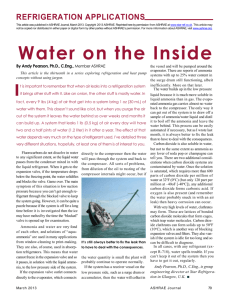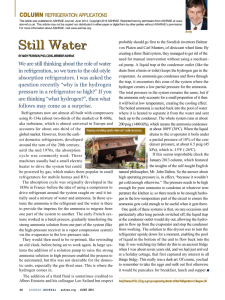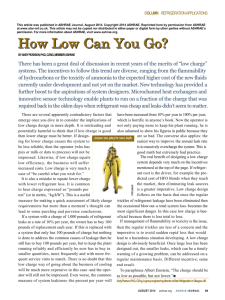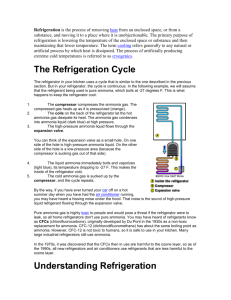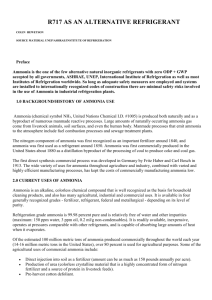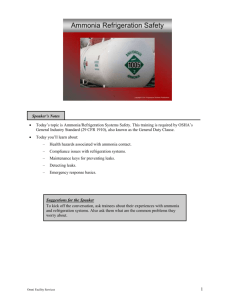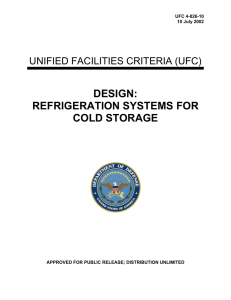I`m on You
advertisement
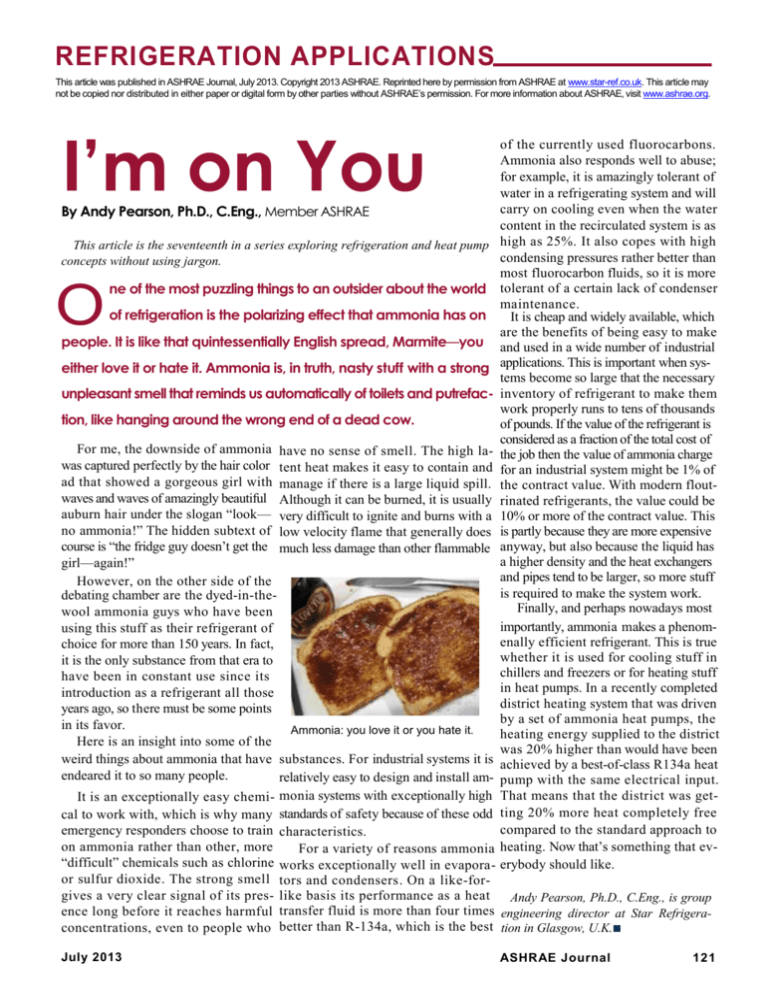
REFRIGERATION APPLICATIONS This article was published in ASHRAE Journal, July 2013. Copyright 2013 ASHRAE. Reprinted here by permission from ASHRAE at www.star-ref.co.uk. This article may not be copied nor distributed in either paper or digital form by other parties without ASHRAE’s permission. For more information about ASHRAE, visit www.ashrae.org. I’m on You By Andy Pearson, Ph.D., C.Eng., Member ASHRAE This article is the seventeenth in a series exploring refrigeration and heat pump concepts without using jargon. O ne of the most puzzling things to an outsider about the world of refrigeration is the polarizing effect that ammonia has on people. It is like that quintessentially English spread, Marmite—you either love it or hate it. Ammonia is, in truth, nasty stuff with a strong unpleasant smell that reminds us automatically of toilets and putrefaction, like hanging around the wrong end of a dead cow. of the currently used fluorocarbons. Ammonia also responds well to abuse; for example, it is amazingly tolerant of water in a refrigerating system and will carry on cooling even when the water content in the recirculated system is as high as 25%. It also copes with high condensing pressures rather better than most fluorocarbon fluids, so it is more tolerant of a certain lack of condenser maintenance. It is cheap and widely available, which are the benefits of being easy to make and used in a wide number of industrial applications. This is important when systems become so large that the necessary inventory of refrigerant to make them work properly runs to tens of thousands of pounds. If the value of the refrigerant is considered as a fraction of the total cost of the job then the value of ammonia charge for an industrial system might be 1% of the contract value. With modern floutrinated refrigerants, the value could be 10% or more of the contract value. This is partly because they are more expensive anyway, but also because the liquid has a higher density and the heat exchangers and pipes tend to be larger, so more stuff is required to make the system work. Finally, and perhaps nowadays most importantly, ammonia makes a phenomenally efficient refrigerant. This is true whether it is used for cooling stuff in chillers and freezers or for heating stuff in heat pumps. In a recently completed district heating system that was driven by a set of ammonia heat pumps, the heating energy supplied to the district was 20% higher than would have been achieved by a best-of-class R134a heat pump with the same electrical input. That means that the district was getting 20% more heat completely free compared to the standard approach to heating. Now that’s something that everybody should like. For me, the downside of ammonia have no sense of smell. The high lawas captured perfectly by the hair color tent heat makes it easy to contain and ad that showed a gorgeous girl with manage if there is a large liquid spill. waves and waves of amazingly beautiful Although it can be burned, it is usually auburn hair under the slogan “look— very difficult to ignite and burns with a no ammonia!” The hidden subtext of low velocity flame that generally does course is “the fridge guy doesn’t get the much less damage than other flammable girl—again!” However, on the other side of the debating chamber are the dyed-in-thewool ammonia guys who have been using this stuff as their refrigerant of choice for more than 150 years. In fact, it is the only substance from that era to have been in constant use since its introduction as a refrigerant all those years ago, so there must be some points in its favor. Ammonia: you love it or you hate it. Here is an insight into some of the weird things about ammonia that have substances. For industrial systems it is endeared it to so many people. relatively easy to design and install amIt is an exceptionally easy chemi- monia systems with exceptionally high cal to work with, which is why many standards of safety because of these odd emergency responders choose to train characteristics. on ammonia rather than other, more For a variety of reasons ammonia “difficult” chemicals such as chlorine works exceptionally well in evaporaor sulfur dioxide. The strong smell tors and condensers. On a like-forgives a very clear signal of its pres- like basis its performance as a heat Andy Pearson, Ph.D., C.Eng., is group ence long before it reaches harmful transfer fluid is more than four times engineering director at Star Refrigeraconcentrations, even to people who better than R-134a, which is the best tion in Glasgow, U.K.■ July 2013 ASHRAE Journal 121
